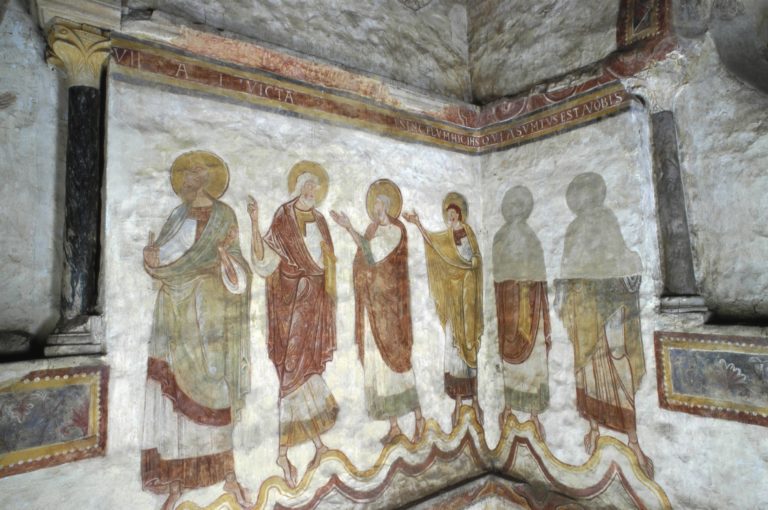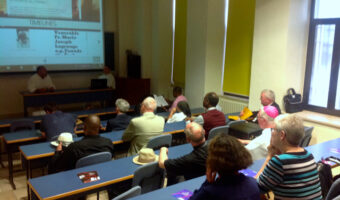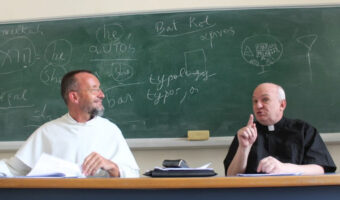The Bible is omnipresent in medieval inscriptions, as it is in many other medieval writings. The visual and material dimension, as much as the verbal, of these texts engraved in stone, wood or metal, leads us to analyse “epigraphic exegesis” within the monumental or objectal framework of their supports, and more broadly as part of the “architectural exegesis” of the ecclesiastical edifice. It was following the two colloquia entitled Mise(s) en œuvre(s) des Écritures, co-organised with the CESCM in 2016 and 2017, that a partnership was formed between the Bible in its Traditions programme and the Corpus des inscriptions.
BEST (la Bible en ses Traditions) from the École Biblique et Archéologique Française de Jérusalem, launched in 2010, is developing a new type of annotated Bible, which brings together the historical study of the Scriptures with the wealth of their interpretations over the centuries. The aim is to restore the polyphony of the biblical text, which has never been static, by accompanying it with the sounding board that is the history of its reception (liturgy, literature, music, visual arts, theatre, dance and cinema, etc.). BEST is an international collaborative platform on the Internet, bringing together biblical scholars and specialists in disciplines linked to the twenty-nine annotation headings.
For its part, the Corpus des inscriptions has two directories on the scriptural presence in inscriptions from the Middle Ages, both of which have been little used. Produced and regularly updated by Robert Favreau, the first deals with biblical quotations and allusions, the second with biblical characters. Only available in paper format, both can be consulted at the CESCM library. To compile them, R. Favreau analysed all the editions of inscriptions in Europe (Austria, Belgium, Denmark, France, Germany, Ireland, Italy, Poland, Portugal, Spain, Switzerland and the United Kingdom) and in the Holy Land. In the case of inscriptions not yet published by these major publishing houses, bibliographical references are made to other collections (for example the volumes of Catalunya romànica) or to specific studies.
This partnership has a dual objective :
- on the one hand, to make this first inventory digitally accessible,
secondly, to enable a detailed study of this three-dimensional scriptural presence in epigraphy, while benefiting from the insights of more than 300 other BEST programme collaborators. The Digital Bible will be linked to the CESCM’s digital platforms: TITULUS, the electronic edition of medieval inscriptions, and the ROMANE database. The first phase has been launched thanks to the active participation of students and volunteers: Marie Barreau (CESCM Master’s degree, 2017-2018), Louis-Nobi Georgel (CESCM civic service volunteer 2018-2019), and soon an ERASMUS intern (University of Chieti, Italy).This collaboration will be extended to inscriptions from Christian antiquity, not only thanks to the relaunch of the Recueil des inscriptions chrétiennes de la Gaule at the CESCM with the support of the Fondation Vauchez-Balzan, but also through a partnership that is being set up with Professor Antonio Felle (Università degli Studi di Bari “Aldo Moro”), author of Biblia Epigraphica : la sacra scrittura nella documentazione epigrafica dell’Orbis Christianvs (III-VIII secolo), Bari: Edipuglia, 2006.
- Info: estelle.ingrand.varenne@univ-poitiers.fr


